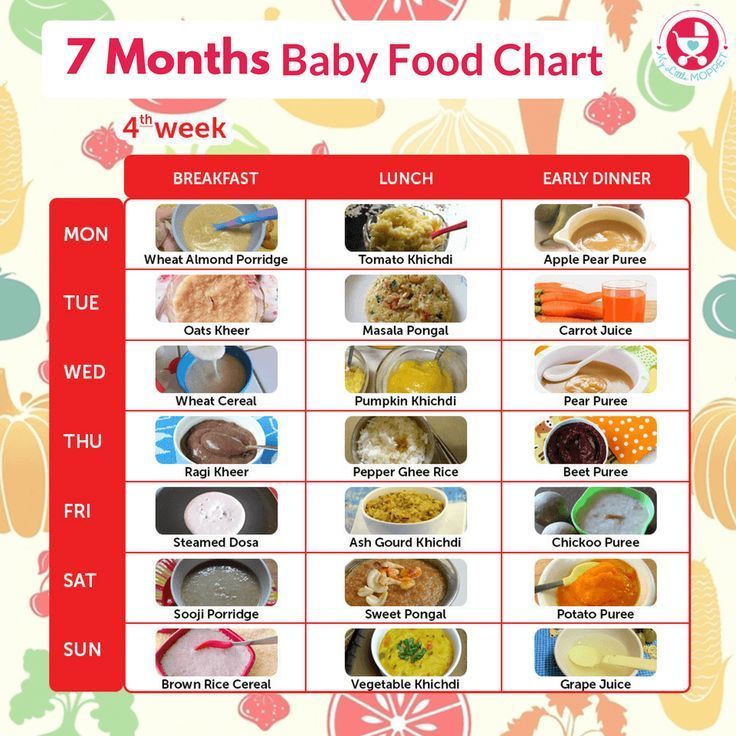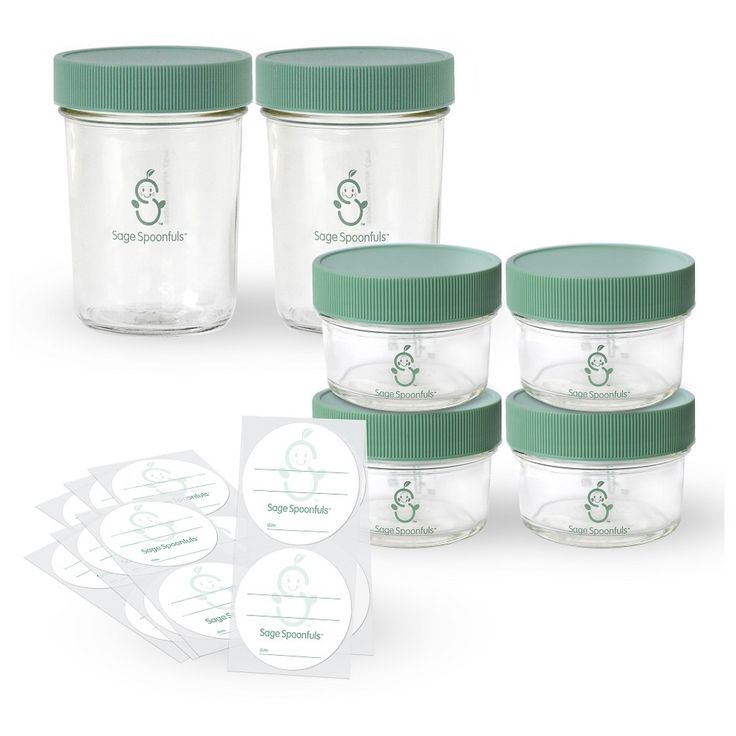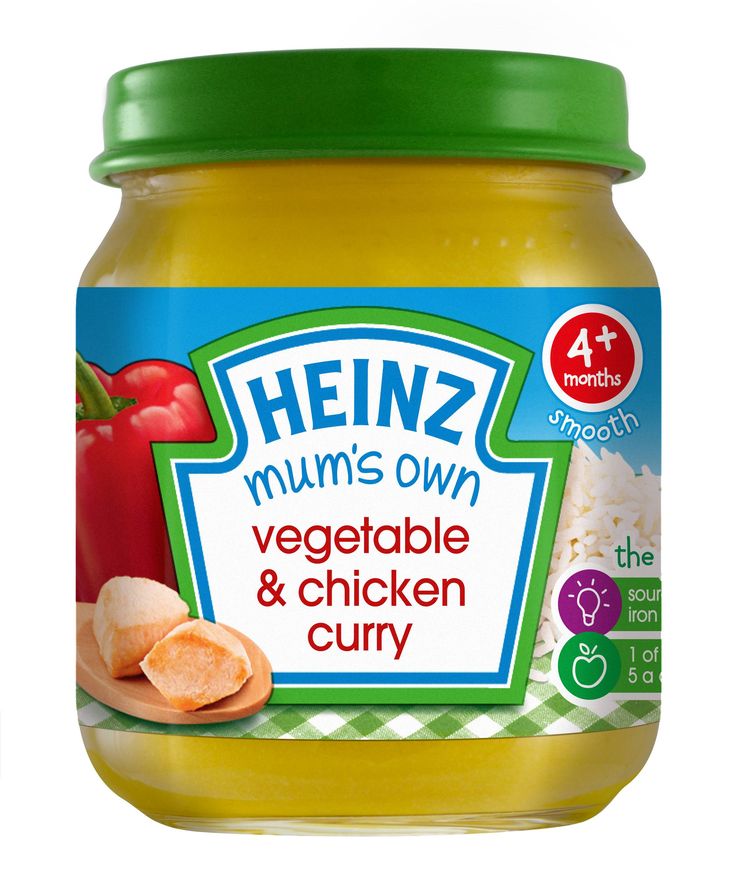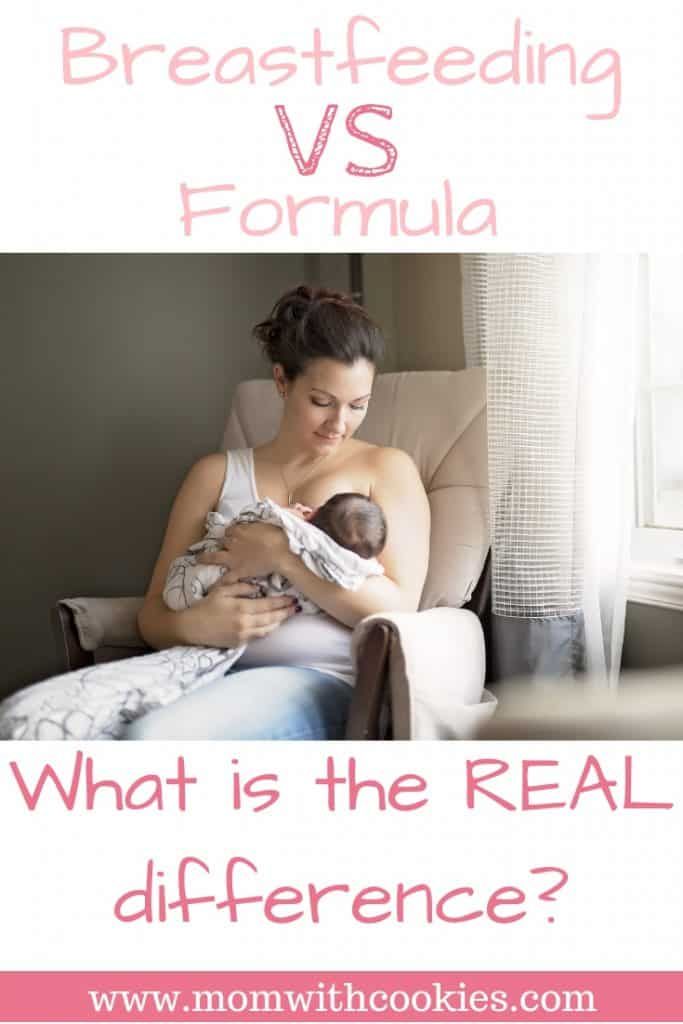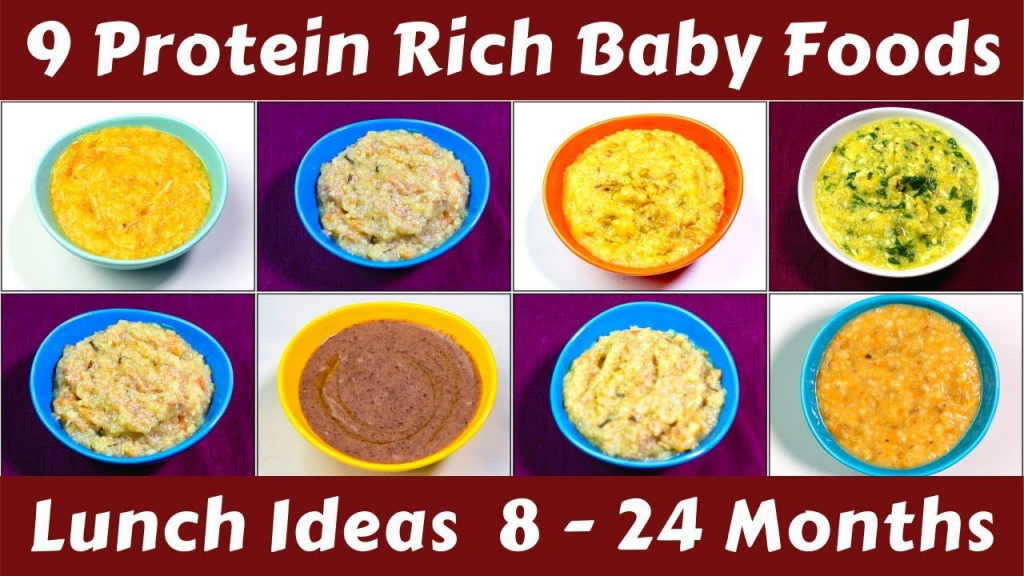Supplementary foods for baby
Feeding from around 6 months
Category: Child Health
Topic: Diet and Eating
Your baby needs to start eating foods other than breastmilk or formula at around 6 months of age. This is because your growing baby can no longer get enough iron, zinc and energy from breastmilk or formula alone. However, breastmilk has important nutrients for growing and should be continued until 12 months and beyond for as long as you and your baby want. The aim is that by 12 months your baby will be eating a wide range of healthy foods with the rest of the family.
What foods can my baby eat?
- It is important that the first foods you give your baby are rich in iron. This includes cereals with added iron (e.g. baby rice cereal) and cooked and pureed meat, poultry, fish, tofu and legumes.
- After this, begin adding a range of fruit, vegetables, grains/cereals and dairy foods (e.g. yoghurt, cheese and custard) in any order that suit you and your baby.
- It is recommended that the first foods given to your baby are pureed.
Adding breastmilk or formula can help make foods smooth and mushy.
- Drinking plain water is a good habit to encourage early. Begin offering cooled boiled water from a cup with a spout.
- Breastmilk or formula will be your baby’s main food at this age. Continue to breastfeed or formula feed on demand.
Feeding from around 6 months
All babies are different and will start eating foods in a different order and rate that is right for them. Here are some tips to help you start introducing your baby to complementary foods:
- Choose a time when your baby is happy and you are calm. Make sure you have time to focus on your baby.
- Start with a single iron-rich pureed food like baby rice cereal or pureed meat.
- Offer 1 to 2 teaspoons of first foods after a breast or infant formula feed. Slowly increase this to 2 to 3 tablespoons.
- Start offering complementary foods once a day and slowly build up to 3 times a day.
 Offer more food as your baby grows.
Offer more food as your baby grows. - It is normal for babies to refuse new foods. Sometimes it can take 10 to 12 times of offering a food before a baby will accept it.
- Babies know when they have had enough and may turn their head away. Offer your baby food later instead of forcing them to keep eating.
- Always supervise babies when they are eating.
Feeding from 7 to 12 months
By now your baby is eating baby rice cereal and pureed meats, grains, fruit, vegetables, some dairy and breastmilk or formula.
- Over the next few months, vary the texture of foods from smooth, to a fine mash, to a lumpy mash, to minced food, to finger food. Giving different textures is good for jaw and mouth development.
- Offer foods 3 times per day, at routine meal times, moving from after to before breastfeeds or infant formula as intake increases.
- Accept mess. Your baby will make some mess as they experiment and touch different foods.

- Continue to try a variety of new foods—fruits, vegetables, meat and fish, grains, and dairy. Make sure boneless fish is cooked and checked well for bones. Canned products should be in water, and not salted.
- Cooled boiled water, expressed breastmilk or formula can be offered from a cup.
- Sit your baby with the family at meal times to watch and learn.
- The amount of food your baby needs will change from day to day depending on their growth and activity levels. Provide your baby with a variety of foods and let them decide how much they want to eat. It is okay to have food left over on the plate. Check and record your baby’s growth regularly as a guide that they are getting enough.
Are there any foods that are not good for my baby?
It is important to offer your baby a wide range of foods with different flavours and textures. Some foods are not needed and are best to be avoided at this age to reduce the risk of choking or illness:
- Small, hard foods may cause choking.
 Avoid foods such as whole nuts, seeds, corn chips, hard lollies, raw carrot, and chunks of apple.
Avoid foods such as whole nuts, seeds, corn chips, hard lollies, raw carrot, and chunks of apple. - There is no need to add sugar or salt to foods. They can cause tooth decay and can make extra work for your baby’s small kidneys.
- Cow’s milk should not be given as a drink until 12 months of age. Some cow’s milk can be added to food to help with pureeing or mashing.
- Honey is not needed and can cause illness in babies younger than 12 months of age. It is unsafe to use honey as a sweetener on dummies or bottles.
- Soft drinks, cordials, fruit juice, tea and coffee are not suitable drinks for babies. Breastmilk (or formula) and water are the only fluids your baby needs.
Tips
- Prepare food ahead of time and freeze it in ice-cube trays or small individual containers for later use.
- Babies have an increased risk of food poisoning. Make sure food is fresh, clean and stored correctly. Only keep prepared food in your fridge for 1 to 2 days.

- You will notice changes in your baby’s nappies as they eat new foods. This can be normal and might change with different foods. Contact your health professional if you are concerned.
- Check your baby’s growth often and make sure it is recorded on the growth chart in your baby’s Personal Health Record. Check that your baby’s growth keeps following the pattern or curve on the graph. If the growth curve is flat or moving downward, see your health professional immediately.
- When your baby’s teeth appear, brush them with a child-sized, soft toothbrush. Use a pea-sized amount of low-fluoride toothpaste after your baby turns 6 months in non-fluoridated areas and after 18 months in fluoridated areas.
Sample menu (6 to 7 months)
This sample menu might guide you when starting your baby on solid food. This is a guide only. Babies may vary how much they eat each day depending on growth and activity.
Breakfast
Baby cereal (1 tablespoon) mixed with breastmilk or formula
Mashed fruit (1/2 tablespoon)
Yoghurt (1/2 tablespoon)
Breastmilk or 100mL infant formula
Mid morning
Breastmilk or 150mL infant formula
Lunch
Blended/mashed meat (1 tablespoon)
Blended/mashed vegetables (1 tablespoon)
Bread cut into pieces (1/2 slice) or pasta/rice (1 tablespoon)
Breastmilk or 100mL infant formula
Mid afternoon
Breastmilk or 150mL infant formula
Dinner
Blended/mashed meat (1 tablespoon)
Blended/mashed vegetables (1 tablespoon)
Pasta/rice (1 tablespoon)
Breastmilk or 100mL infant formula
Sample menu (7 to 12 months)
This sample menu might guide you when starting your baby on solid food. This is a guide only. Babies may vary how much they eat each day depending on growth and activity.
This is a guide only. Babies may vary how much they eat each day depending on growth and activity.
Breakfast
Baby cereal (about 3 tablespoons) mixed with breastmilk or formula or cow’s milk
Mashed fruit (1 tablespoon)
Yoghurt (1/2 tablespoon)
Breastmilk or 100mL infant formula
Mid morning
Breastmilk or 150mL infant formula
Lunch
Blended/mashed meat (1 tablespoon)
Blended/mashed vegetables (1 tablespoon)
Bread cut into pieces (1/2 slice) or pasta/rice (1/4 cup)
Breastmilk or 100mL infant formula
Mid afternoon
Breastmilk or 150mL infant formula
Dinner
Blended/mashed meat (1 tablespoon)
Blended/mashed vegetables (1 tablespoon)
Pasta/rice (1/2 cup)
Breastmilk or 100mL infant formula
Resources for parents, families and carers
Booklet: Child Health Information, Queensland Government (given to parents of every baby born in Queensland with the Personal Health record)
Growing Strong—Starting solids, Queensland Government
Breastfeeding your baby in Australia, Queensland Government—including booklet, poster and fact sheets for Sudanese, Burundian and Congolese communities
Healthdirect Australia—Introducing solid food, Australian Government
Raising Children Network—Introducing solids, Australian Government
Brochure: Giving your baby the best start, Australian Government
Brochure: Get Up and Grow, Australian Government
Starting family foods, New South Wales Government
Brochure: Starting solids, New South Wales Health
Baby’s first foods, New South Wales Government
Eating tips for babies, Victoria Government
Booklet: Guide to foods—baby’s first year, Victoria Government
Fact sheet: Foods in the first year of life, Victoria Government
Healthy eating for babies and young children, South Australia Government
Foods for babies (solids), South Australia Health
Booklet: First foods, South Australia Government
Drinks for children, South Australia Government
Booklet: Baby’s first food, Western Australia Government
Fact sheet: Baby’s first food, Western Australia Government
Booklet: From milk to more… Introducing foods to your baby, Australian Capital Territory Government
Booklet: Start them right—A parent’s guide to eating for under 5s, Tasmanian Government
Related contnet
Introducing complementary foods: Feeding from 12 months
Introducing complementary foods: Recipes for babies
How children develop: Food and nutrition (1 to 5 years)
Healthy eating and weight control in children
Iron for toddlers and children
Acknowledgement
This information is drawn from:
- Children’s Health Queensland Hospital and Health Service 2015, Child health information: Your guide to the first 12 months.
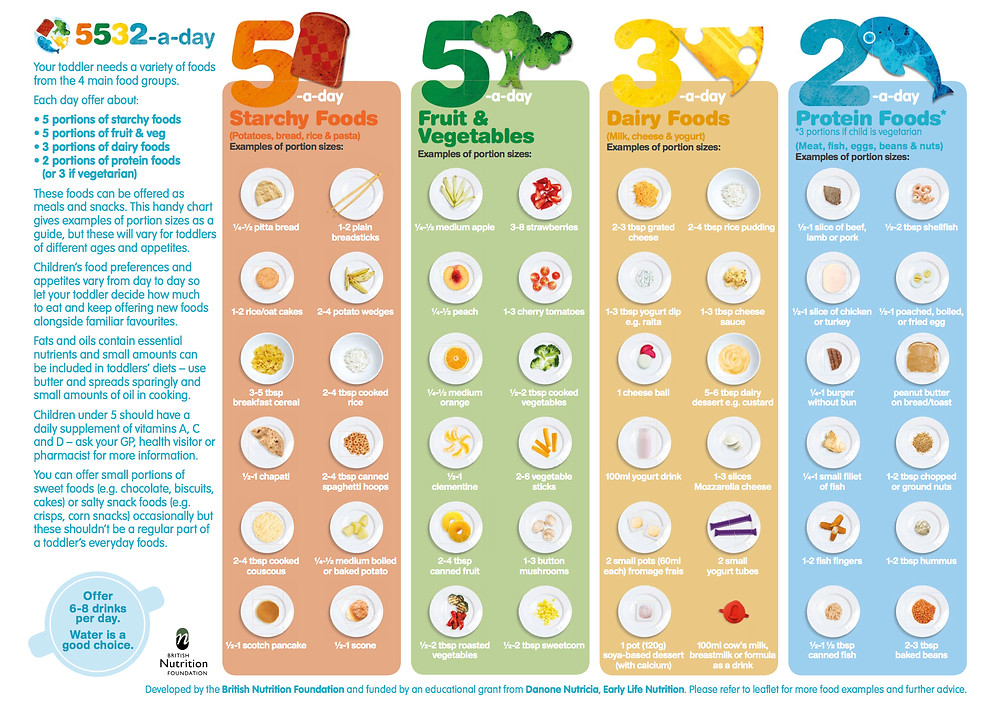
- National Health and Medical Research Council 2013, Australian dietary guidelines.
- National Health and Medical Research Council 2013, Infant feeding guidelines.
This fact sheet is also the result of input and effort from many health professionals in Queensland. Their assistance with the content is greatly appreciated.
This information is provided as general information only and should not be relied upon as professional or medical advice. Professional and medical advice should be sought for particular health concerns or events. Best efforts have been used to develop this information, which is considered correct and current in accordance with accepted best practice in Queensland as at the date of production. The State of Queensland (Queensland Health) does not accept liability to any person for the information provided in this fact sheet nor does it warrant that the information will remain correct and current. The State of Queensland (Queensland Health) does not promote, endorse or create any association with any third party by publication or use of any references or terminology in this fact sheet.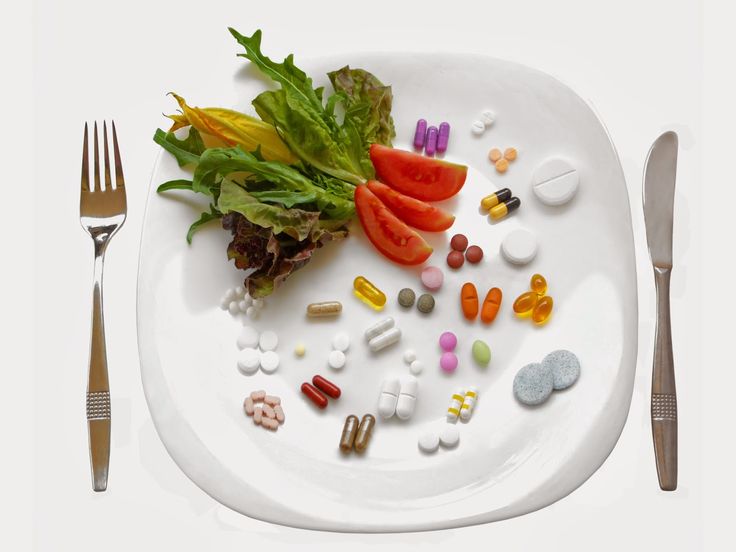
Feeding your baby: 6–12 months
At 6 months of age, breastmilk continues to be a vital source of nutrition; but it’s not enough by itself. You need to now introduce your baby to solid food, in addition to breastmilk, to keep up with her growing needs.
Be sure you give your baby her first foods after she has breastfed, or between nursing sessions, so that your baby continues to breastfeed as much as possible.
When you start to feed your baby solid food, take extra care that she doesn’t become sick. As she crawls about and explores, germs can spread from her hands to her mouth. Protect your baby from getting sick by washing your and her hands with soap before preparing food and before every feeding.
Your baby's first foods
When your baby is 6 months old, she is just learning to chew. Her first foods need to be soft so they’re very easy to swallow, such as porridge or well mashed fruits and vegetables. Did you know that when porridge is too watery, it doesn't have as many nutrients? To make it more nutritious, cook it until it’s thick enough not to run off the spoon.
Feed your baby when you see her give signs that she's hungry – such as putting her hands to her mouth. After washing hands, start by giving your baby just two to three spoonfuls of soft food, twice a day. At this age, her stomach is small so she can only eat small amounts at each meal.
The taste of a new food may surprise your baby. Give her time to get used to these new foods and flavours. Be patient and don’t force your baby to eat. Watch for signs that she is full and stop feeding her then.
As your baby grows, her stomach also grows and she can eat more food with each meal.
Feeding your baby: 6–8 months old
From 6–8 months old, feed your baby half a cup of soft food two to three times a day. Your baby can eat anything except honey, which she shouldn't eat until she is a year old. You can start to add a healthy snack, like mashed fruit, between meals. As your baby gets increasing amounts of solid foods, she should continue to get the same amount of breastmilk.
Feeding your baby: 9–11 months old
From 9–11 months old, your baby can take half a cup of food three to four times a day, plus a healthy snack. Now you can start to chop up soft food into small pieces instead of mashing it. Your baby may even start to eat food herself with her fingers. Continue to breastfeed whenever your baby is hungry.
Each meal needs to be both easy for your baby to eat and packed with nutrition. Make every bite count.
Foods need to be rich in energy and nutrients. In addition to grains and potatoes, be sure your baby has vegetables and fruits, legumes and seeds, a little energy-rich oil or fat, and – especially – animal foods (dairy, eggs, meat, fish and poultry) every day. Eating a variety of foods every day gives your baby the best chance of getting all the nutrients he needs.
If your baby refuses a new food or spits it out, don’t force it. Try again a few days later. You can also try mixing it with another food that your baby likes or squeezing a little breastmilk on top.
Feeding non-breastfed babies
If you're not breastfeeding your baby, she’ll need to eat more often. She'll also need to rely on other foods, including milk products, to get all the nutrition her body needs.
- Start to give your baby solid foods at 6 months of age, just as a breastfed baby would need. Begin with two to three spoonfuls of soft and mashed food four times a day, which will give her the nutrients she needs without breastmilk.
- From 6–8 months old, she’ll need half a cup of soft food four times a day, plus a healthy snack.
- From 9–11 months old, she’ll need half a cup of food four to five times a day, plus two healthy snacks.
what products are possible, features of complementary foods
It is no secret that young and not very experienced mothers receive information on the nutrition of an infant, including recommendations on how to introduce the first complementary foods, mainly from two sources: grandmother's stories and from the Internet.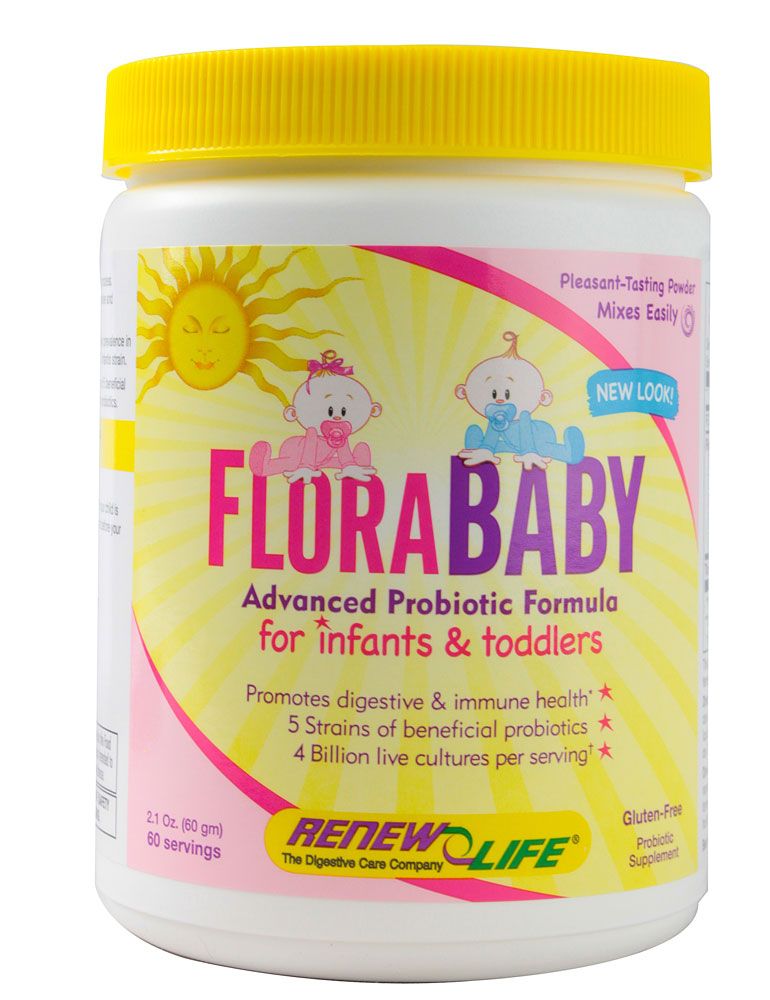 Unfortunately, both of these respected sources of information may voluntarily or not voluntarily, but be very mistaken, since grandmothers grew up in a more prosperous time in terms of environmental conditions, and the Internet is littered with various articles that are rarely written by professionals, moreover, they rely either on explicit outdated guides on baby food, or frankly on unverified information.
Unfortunately, both of these respected sources of information may voluntarily or not voluntarily, but be very mistaken, since grandmothers grew up in a more prosperous time in terms of environmental conditions, and the Internet is littered with various articles that are rarely written by professionals, moreover, they rely either on explicit outdated guides on baby food, or frankly on unverified information.
In this article, I will try to combine the latest scientific data and recommendations on how to introduce the first complementary foods with many years of observations from the experience of a practical pediatrician and an allergist-immunologist.
At what age is it time to introduce the first complementary foods
According to the recommendations of the Research Institute of Nutrition of the Russian Academy of Medical Sciences, the first complementary foods can be introduced from 4.5 - 5 months, regardless of the type of feeding. This is "average". In practice, the choice of when to start introducing complementary foods still depends on the individual characteristics of the child. For example, for a child with widespread atopic dermatitis (diathesis), we will not introduce complementary foods until at least acute skin symptoms, such as cracks, weeping or secondary eczema, have steadily disappeared. Increased dryness and flaking of the skin, of course, require constant application of moisturizers to the skin, but in no case are they a contraindication to the start of the introduction of the first complementary foods.
For example, for a child with widespread atopic dermatitis (diathesis), we will not introduce complementary foods until at least acute skin symptoms, such as cracks, weeping or secondary eczema, have steadily disappeared. Increased dryness and flaking of the skin, of course, require constant application of moisturizers to the skin, but in no case are they a contraindication to the start of the introduction of the first complementary foods.
Another important point when choosing the time to start introducing complementary foods is the dynamics of the child's weight gain. The more intensively the child gains in height and weight, the sooner he may need additional calories, since the energy value of breast milk or artificial formula alone will most likely not be enough for a child who grows faster than his peers by 4 - 5 months. We must not forget that natural products contain a fairly large range of minerals and vitamins, and a mother’s body, alas, cannot be an eternal and bottomless source of useful nutrients, somewhere something will gradually begin to be missed.
In addition, the nature of lactation in the mother has a great influence on the timing of the introduction of complementary foods. If a nursing mother begins to feel a lack of milk, I would prefer to first give her advice on stimulating lactation, and at the same time begin to introduce complementary foods. It will be better than introducing an artificial mixture. But I repeat that the earliest start date for the introduction of the first complementary foods is the age of 4 months, before the child's body is not yet ready, the risk of developing allergies is also high.
So, we agree with you that the first complementary foods can be introduced no earlier than 4 months of a child's life.
First complementary foods: Which foods to choose?
The first complementary foods, as a rule, should consist of vegetable or fruit purees, but in no case juices. Still, juices, even for children, are highly filtered, mainly contain a large amount of organic acids and “light” carbohydrates (that is, sugar, to make it clear to everyone). I will not waste time explaining why juices are harmful to an infant, but I will describe a clinical case from practice.
I will not waste time explaining why juices are harmful to an infant, but I will describe a clinical case from practice.
Parents with an 8-month-old girl came to the reception. Somewhere from 5 months she practically did not gain weight, although before that all indicators were normal. In the analyzes, in addition to visible signs of iron deficiency, slightly reduced hemoglobin, no pathology was also detected. The main complaint: "does not eat anything." And when I began to find out what she still eats, it turned out that the child drinks half a liter of juice every day. But porridge or cottage cheese, or mashed potatoes cannot be forced together, they spit everything out. I don't like the taste. And so - for three months. The child, of course, became very nervous, yelling at night, demanding juice.
So draw your own conclusions and be careful.
For the first feeding, this is now recognized by everyone, the best dishes are vegetable purees from green varieties of vegetables: zucchini, cauliflower, broccoli. The first complementary foods are introduced, starting with half a teaspoon, in the morning for three days, then gradually increase the amount of the product to 40-50 grams per week. Supplemented with breast milk or formula.
The first complementary foods are introduced, starting with half a teaspoon, in the morning for three days, then gradually increase the amount of the product to 40-50 grams per week. Supplemented with breast milk or formula.
For problems with stools, constipation, it’s good to start introducing prune puree, green apple, you can try pumpkin, even apricot puree, but in no case start with carrots. Beta-carotenoids, which are abundant in carrots, are generally poorly absorbed and can cause allergies in a child.
Second food. Porridge or meat?
Even 5 - 6 years ago, we taught students at the medical institute that from 5 - 5.5 months old, an infant should begin to give cereal porridge for complementary foods. This is rice, buckwheat, corn. The first week you can cook 5% porridge: 5 grams of ground cereal per 100 ml of water. Then the porridges are cooked already denser: 10 grams of cereal per 100 ml of water. But now, basically everyone uses instant (soluble) cereals, which are diluted with water according to the instructions on the package.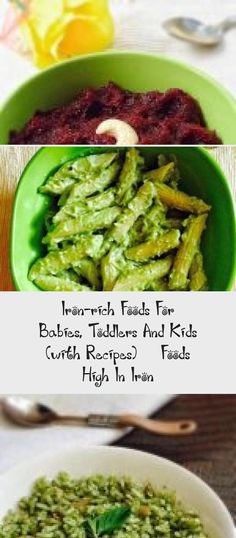 In addition, ready-to-eat liquid cereals are on sale: for example, Bellakt, Frutonyanya, etc.
In addition, ready-to-eat liquid cereals are on sale: for example, Bellakt, Frutonyanya, etc.
Why meat? You ask. According to modern recommendations (they really began to change quite often), but in this case I support: if a child has a pronounced decrease in hemoglobin in the blood below 100 g / l by the age of 5 months, it makes sense to start introducing fruit or vegetable purees as a second types of complementary foods - meat purees as a source of the most well-absorbed heme iron. You need to choose from varieties such as turkey, rabbit, lamb. Beef and veal can only be offered to children who did not have red cheeks and diathesis.
In the absence of problems with low hemoglobin, feel free to introduce porridge as the second meal of complementary foods, especially if the child is small and does not gain weight very well. In this case, we can recommend breeding cereals with the addition of breast milk or a mixture (Nan, Nutrilon, Celia, Nanny). With mixtures based on goat's milk, parents of children with a predisposition to allergies should be very careful.![]() Goat milk formulas are not the best choice for babies who are allergic or intolerant to cow's milk protein, whatever the internet says. Believe me, there are serious scientific articles by foreign authors, which provided data on a very high frequency of cross-allergy between cow and goat milk proteins in children who were transferred to goat milk mixtures. And I saw it myself in my practice, when a child with dermatitis was transferred to a mixture of goat's milk, there was a clear improvement for a month or two, and then all over again and with a doubled degree of allergic skin damage.
Goat milk formulas are not the best choice for babies who are allergic or intolerant to cow's milk protein, whatever the internet says. Believe me, there are serious scientific articles by foreign authors, which provided data on a very high frequency of cross-allergy between cow and goat milk proteins in children who were transferred to goat milk mixtures. And I saw it myself in my practice, when a child with dermatitis was transferred to a mixture of goat's milk, there was a clear improvement for a month or two, and then all over again and with a doubled degree of allergic skin damage.
Introduction to fermented milk products
This is the most difficult question. I am sure that most of our grandparents demand that their stupid parents start drinking milk and kefir as soon as possible. In a number of cases, children really start to absorb sour-milk products quite well after 6 months, but before this age I am very careful even with sour-milk Agusha, and even introducing milk or kefir before 6 months is a bad form, believe me, and can lead to very bad consequences for the child. I understand the Western European medical community, which has recently banned its pediatricians from recommending fermented milk products for complementary foods for children under 3 years of age, just imagine!
I understand the Western European medical community, which has recently banned its pediatricians from recommending fermented milk products for complementary foods for children under 3 years of age, just imagine!
They (the Europeans) need to do something with their artificial milk mixtures. Even 20 years ago, we did not know other mixtures after the "two", that is, the second formula for children from 6 to 12 months. Then there were formulas for children from 1 to 2 years old, then from 2 to 3 years old, and now there are already mixtures for children up to 4 years old, and I think if this goes on, then until the age of sixteen there will be their own milk substitutes. Dismiss me, I don't think this approach is correct. But the fact is that our grandparents had much better genetics than the generation of our children, alas. In the context of the growth of the possibilities of medicine, genetically determined diseases are also growing, and in this case - intolerance to cow's milk protein, and with every 10 years there are more and more such people among us. But if a child really suffers from an allergy to cow's milk protein or he is severely deficient in enzymes, then he will carry this peculiarity through his whole life, and most likely he will not drink milk or kefir himself, and there is no need to force him if he himself won't want to!
But if a child really suffers from an allergy to cow's milk protein or he is severely deficient in enzymes, then he will carry this peculiarity through his whole life, and most likely he will not drink milk or kefir himself, and there is no need to force him if he himself won't want to!
But you are lucky with genetics, and no one in the family has ever had an allergy (which is hard to imagine nowadays), and most importantly, if your child has always had perfectly clean skin, then the first of the dairy products - cottage cheese, you will begin to offer your child with 7 months, kefir - from 10 months. Milk - after a year. It will be better this way.
But if your family does not have a very close and joyful relationship with milk, then it is better to postpone even the introduction of kefir and yogurt into complementary foods for a child until the age of 18 months.
Fish day and first meal
Fish is a very healthy product, rich in vitamins and antioxidants, but it must also be introduced carefully. I advise you to start introducing the first fish food at about 7-8 months. It is better to start with species such as cod, hake, haddock. The rules are the same: the first three days on the "gram," then slowly add. If there are no problems in a week or two, you can try such delicacies as tuna or salmon, of course, canned children, if you can find it. It is better not to mess with trout and salmon in the first year of life, this fish is all stuffed with dyes and antibiotics.
I advise you to start introducing the first fish food at about 7-8 months. It is better to start with species such as cod, hake, haddock. The rules are the same: the first three days on the "gram," then slowly add. If there are no problems in a week or two, you can try such delicacies as tuna or salmon, of course, canned children, if you can find it. It is better not to mess with trout and salmon in the first year of life, this fish is all stuffed with dyes and antibiotics.
No matter how hard I tried, the article about the first complementary foods turned out to be long. Thank you for reading to the end, I hope it will be useful. If you have questions about the introduction of complementary foods, you can write your appeals on our website in the question to a specialist section. A short answer can be obtained via the Internet, but in order to make a diagnosis and give a detailed consultation, of course, you need to come to a face-to-face appointment with a pediatrician and a pediatric allergist.
Page not found
How to buy a PlayStation Plus Essentials, Extra and Premium subscription in Russia
How to retire earlier than
Which countries accept tourists from Russia
Everyone is interested
See all
Spending diaries
Investments for beginners
Financial pillow0054 benefits from the state
How to rent an apartment
How to extinguish a loan
Diaries of expenses
Investments for beginners
Contemporaries of the state apartment
How to repay the loan
See all
0058
Rules for entry into Turkey for Russians in 2023
As a man came for a pension that he had not withdrawn for many years. But there was nothing to receive
“You can extend the active life”: a cardiologist on atherosclerosis, cholesterol and heart disease
How much coins in your wallet
Entry rules to Egypt for Russians in 2023
In which countries are the Russian cards Unionpay
In what countries can leave Russia
cm. All
All
How to exchange rights
How to get a Green Card of US neural network for generating Midjourney drawings: correctly compose the request
0003
How to get compensation for Soviet deposits
How much coins in your wallet
In what countries can leave Russia 9005
9030 9.22 0 9000 9000 9000 9000 9000 9000 9000 9000 maternity payments
Rules for entry into Turkey for Russians in 2023
0055
How to register a car in the traffic police
as I was deceived by 15,000 ₽ with Avito-Domavodka
How I ordered a car from Japan
The neural network draws anime: how to process photos using Different Dimence ME
Partial mobilization in Russia: how it will take place, who will fall, who will not be called up
A new unified benefit for children under 17 years old: Basic conditions
courses will help
cm. All
landscape house
Win burnout
25.12.20 Protect from scammers
Do not go broke to health
Sort garbage
Get a dog
To be self -employed

